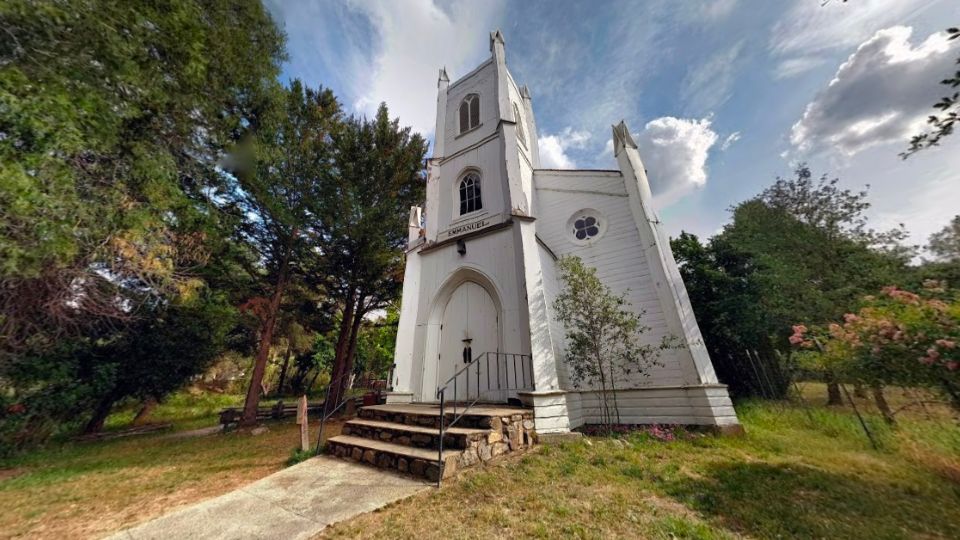California is home to many historic landmarks, but one stands out above the rest: the Cathedral of San Carlos Borromeo, also known as the Royal Presidio Chapel. It holds a special significance and charm. This stunning architectural masterpiece in Monterey has been a silent observer of California’s changing landscape, from the Spanish colonial era to the present day. Let’s explore the fascinating history, stunning architecture, and lasting impact of this remarkable structure, making it a top destination for anyone interested in California’s heritage.
The Beginnings of the Church
The Cathedral of San Carlos Borromeo has a rich history that dates back to the establishment of Monterey’s first mission on June 3, 1770. It was founded by the revered Franciscan saint Junípero Serra. The original chapel, made of wood and adobe, was dedicated to Saint Charles Borromeo, Serra’s patron saint and the Archbishop of Milan. It played a central role for both Spanish settlers and indigenous communities.
However, in 1771, Serra decided to move the mission to a better location near the Carmel River, which led to the establishment of the Mission San Carlos Borromeo de Carmelo. The former chapel in Monterey transformed into the San Jose Chapel for the Presidio of Monterey, which served as a military stronghold protecting Spanish interests. In 1777, the Royal Presidio Chapel was renamed when Monterey became the capital of the Province of Californias.
- IRS Grants Extra Time for 2024 Taxes to Kentucky’s April Storm Survivors
- Fed’s June Meeting: Rate Cuts Not in the Cards: What’s Next?
- Deadline Alert: Michigan Schools Must Act Fast with Federal Stimulus Funds
- How to Access VA Dependent Education Benefits with a 100% Disability Rating
- Big News for SSDI: Social Security Might Add $600 to Payments
The wooden chapel was destroyed by fire in 1789. In its place, a new sandstone marvel was built between 1791 and 1794. Indigenous laborers, under the supervision of the Franciscans, were responsible for its construction. The church is designed in the Spanish Colonial style, with a simple rectangular layout, a vaulted ceiling, a bell tower, and a decorated facade that includes pilasters and niches. The church was consecrated by Bishop Francisco Palou, who was a close associate and chronicler of Serra. It served as a symbol of both religious devotion and impressive architectural design.
Also Read: Exploring the Poorest Counties to Live in Michigan State, Study Reveals
The Historical Significance of the Church
The Cathedral of San Carlos Borromeo has been a significant part of California’s history, witnessing the shift from Spanish to Mexican and later American control. It has been the setting for many important events in history:
- The first confirmation in California was performed by Bishop Palou in 1795.
- The first American citizen to be baptized in California was baptized in 1818 by Father Pedro de la Cueva.
- In 1849, California held its first constitutional convention. During this convention, delegates gathered to draft the state’s very first constitution.
- In 1850, California’s first diocese was established, and the church served as its pro-cathedral until a permanent cathedral was completed in Santa Barbara in 1853.
- The first public school in Monterey was established in 1859, right next to the church.
- The first public library in Monterey was established in 1874, and it was located in the same building as the school.
The church was a place of refuge and a source of inspiration for prominent individuals in California’s history, such as:
- Robert Louis Stevenson, a well-known writer, documented his visit to the church in his book “The Silverado Squatters” in 1879.
- John Steinbeck, the Nobel laureate, was deeply influenced by the church’s atmosphere and rich history during his early years.
- Leon Panetta, the former Secretary of Defense and CIA Director, has a personal connection to the church. He received sacraments, celebrated milestones, and even served as an altar boy.
The Modern Impact of the Church
Today, the Cathedral of San Carlos Borromeo continues to serve as a vibrant parish and a lively community center, offering regular masses, sacraments, and cultural events. It is also a popular tourist spot, located in the Monterey State Historic Park and recognized on the National Register of Historic Places. The church warmly invites visitors of all ages and backgrounds to explore its guided tours, exhibitions, and educational initiatives.
In addition, the church takes great pride in protecting a collection of valuable artifacts and relics that hold significant historical importance. These include the Serra Sarcophagus, the Serra Memorial Cenotaph, the Serra Reliquary, the Royal Presidio Chapel Bell, and the Royal Presidio Chapel Organ, each representing a different aspect of California’s cultural heritage.
In conclusion
The Cathedral of San Carlos Borromeo invites visitors to explore its rich history and embrace its significance in California’s past, present, and future. It goes beyond being just a structure; it represents the essence of faith, culture, and resilience. Visiting this special place allows you to truly experience the heart and soul of California, gain insights from its rich history, and feel inspired by its unwavering resilience. As Saint Junípero Serra urged, “Always move forward, never look back.” Exploring this sacred sanctuary is a truly worthwhile experience.



Leave a Reply